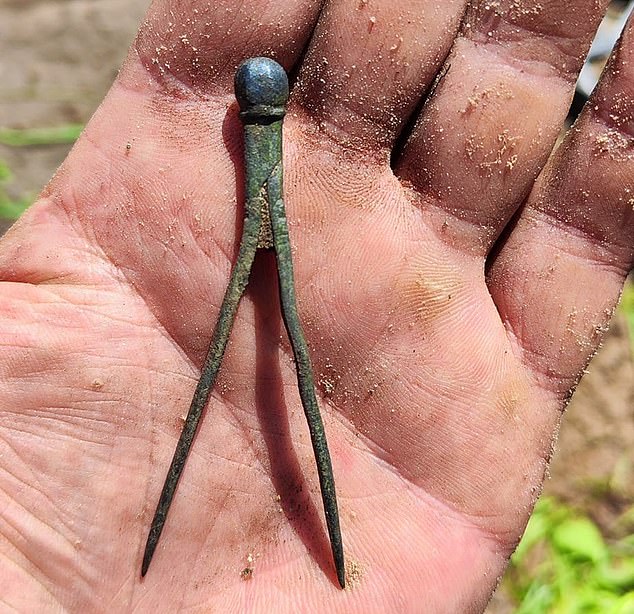- The compass was found on the grounds of the 14th century Frombork Castle.
- It was from there that the astronomer made most of his important discoveries.
A 500-year-old compass believed to have belonged to astronomer Nicolaus Copernicus has been found in a castle in Poland.
The compass, made of copper alloy, was found by amateur archaeologists using ground-penetrating radar to comb the grounds of the 14th-century Frombork Castle in the north of the country.
It was from there that the astronomer made most of his important celestial discoveries and perfected his heliocentric theory that the Sun is at the center of the universe, not the Earth.
The compass, famously depicted in Jan Matejko’s painting “Conservations with God,” was found in a buried room beneath the castle gardens.
A 500-year-old compass believed to have belonged to astronomer Nicolaus Copernicus has been found in a castle in Poland.

The compass, famously depicted in Jan Matejko’s painting ‘Conservations with God’, was found in a buried room beneath the castle gardens.
Posting a photo of the compass hanging above the painting on social media, the Treasure Mission group that found the compass said: ‘In the garden, where Nicolaus Copernicus made his astronomical observations, we found a compass dating back to the early 16th century.
‘This incredible find not only takes us back to the period when Copernicus made his groundbreaking discoveries, but also opens up new possibilities for understanding his working methods.
‘Thanks to collaboration with archaeologists, we learned that this compass could have been used to make precise measurements, which were crucial in astronomical research.

Posting a photo of the compass on social media, the Treasure Mission group that found the compass said: “In the garden, where Nicolaus Copernicus made his astronomical observations, we found a compass dating back to the early 16th century.”

The compass, made of copper alloy, was found by amateur archaeologists using ground-penetrating radar to scan the grounds of the 14th-century Frombork Castle in the north of the country.
Is it possible that this tool was used by Copernicus himself or his colleagues?
According to legend, Copernicus used a secret tunnel from his private residence to access the city’s cathedral.
It was there that amateur archaeologists discovered the compass.
“It could have belonged to Nicolaus Copernicus himself,” explained Zorjana Polenik from the Nicolaus Copernicus Museum in Frombork.
Forced to flee the castle during Poland’s war against the Teutonic Knights in the 1520s, Copernicus later returned to write his seminal work De Revolutionibus Orbium Coelestium.
Published at the end of his life, in March 1543, this transcendental work elevated him to the status of one of the fathers of modern science.
Only many years later, in 1616, the Catholic Church banned the book for opposing Church doctrine.
In 2008, DNA testing of skeletal bones found buried beneath the castle’s foundations confirmed that they belonged to the astronomer.
He is buried in the castle cathedral.
The compass will now be sent to the Polish Conservator of Monuments for testing.

